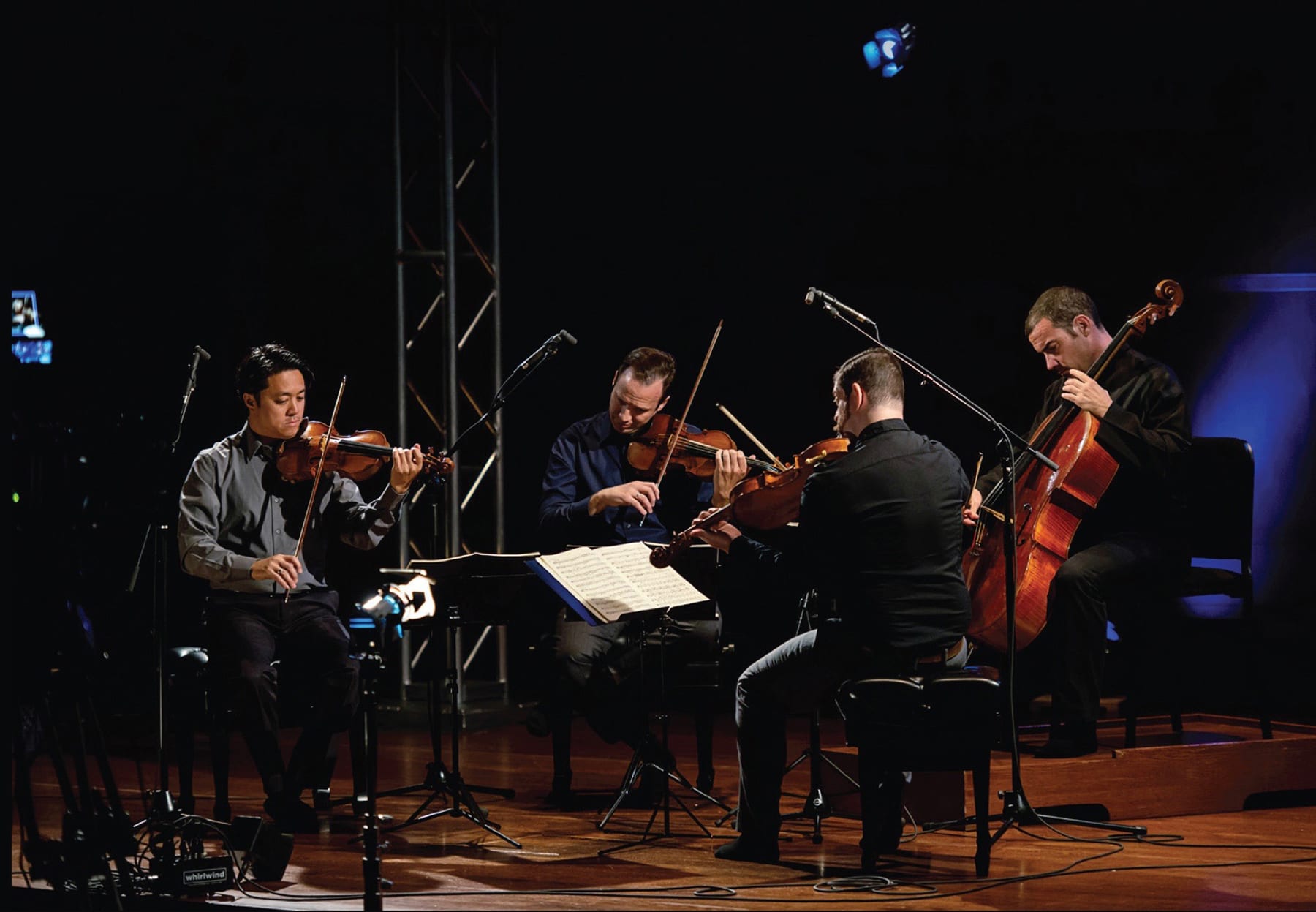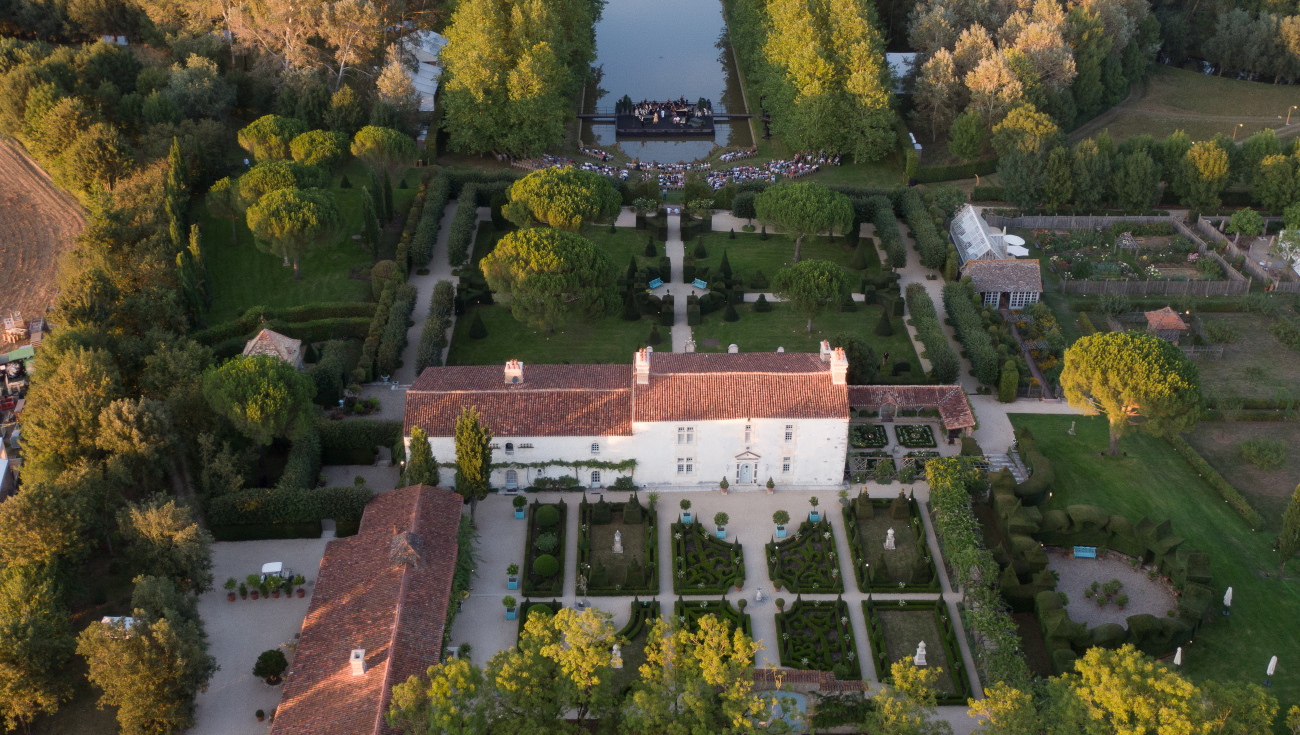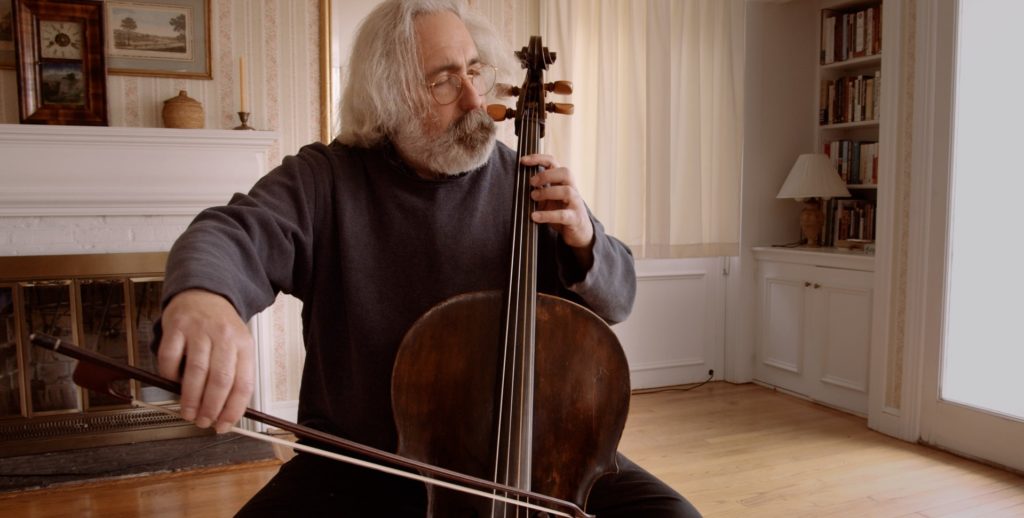In an ordinary year, this would be the month for a chronicle on summer festivals in New York, with an accent on the Mostly Mozart. But, as you don’t need to be told, this is not an ordinary year. What do you say to some livestreams?
The Orchestra of St. Luke’s is doing “Bach at Home.” (This orchestra, as you may recall, got its start in the Church of St. Luke in the Fields, which is in Greenwich Village.) The first of many videos brings us the Brandenburg Concerto No. 2. Actually, this recording was made in February, before the Great Shutdown began. The players got together at the DiMenna Center for Classical Music.
No. 2 is the Brandenburg concerto that features the trumpet, spectacularly. The concerto features three other instruments as well: the flute, the oboe, and the violin. But it’s the trumpet that people remember, understandably. The osl video has young Maximilian Morel on the trumpet. His playing is clean, beautiful, and nimble. When he finishes the last movement—fleet and tricky—he flips his trumpet up. I thought of Tiger Woods, twirling his club after a pure one.
Many years ago, I attended a concert that included the Brandenburg No. 2, and a friend of mine leaned over and said, “You remember the definition of an intellectual: ‘someone who can hear the William Tell Overture without thinking of the Lone Ranger.’ Well, I find it impossible to hear the last movement of this concerto without thinking of William F. Buckley Jr.” wfb used this music as the theme to his long-running television show, Firing Line.
Other videos from the Orchestra of St. Luke’s are authentically “Bach at Home.” Players perform various pieces right where they live. Robert Wolinsky, a harpsichordist, plays a fugue from The Musical Offering. He appears to be on his back patio, and he is wearing a baseball cap. Jesse Mills, a violinist, plays a fugue as well. It is the second movement of the Violin Sonata in G minor. Mills has an excellent sense of rhythm, which is crucial in this music.
Another violinist, Krista Bennion Feeney, does not play a fugue. She plays the Preludio from the Partita in E major. This is one of the most beloved items in all of Bach. Rachmaninoff transcribed the Preludio for piano; Jean Guillou transcribed it for organ. You know who was the first transcriber of it? Bach himself—who repurposed the Preludio for two cantatas.
An osl cellist, Myron Lutzke, plays the Sarabande from the Suite in D minor. He plays it with familiarity, intimacy—even a degree of religiosity, if I may say. Lutzke is a veteran cellist, and cellists live with these suites—the six of them—all life long. They must be especially important, especially valuable, in strange, trying times. I think of a line from a hymn: “great are companions such as these.”
Possibly the most charming of the osl videos has a bunch of kids getting together—via Zoom, I believe—for Bach’s Minuet in G No. 2. They are part of the orchestra’s youth program. They are aided, in this video, by some adults: members of the orchestra, and faculty in the youth program. Playing along, the adults provide some stability. The kids play like kids, but they do so with gusto. (In fact, gusto is a kid quality.)
Finally, let me mention a dose of dance. David Cerutti, a violist, plays the Sarabande from the Cello Suite in C minor. (Yes, violists like to avail themselves of the suites, as who wouldn’t?) Michael Trusnovec dances. He is dancing to choreography by Doug Varone. The dancer moves about his house, or someone’s house: going down stairs, and up them again, in interesting ways; sitting down on a couch, and squirming, then kneeling; going to the front door, and looking briefly outside. At the end, he walks out onto the porch, into the night.
Ordinarily, this kind of thing is not my cup of tea, but I enjoyed this video. Also, if Tom Cruise can dance around the house to “Old Time Rock and Roll,” in Risky Business (1983), a man’s entitled to dance around the house to Bach during lockdown.

the Orcas Island Chamber Music Festival. Photo: OICMF.
The Orcas Island Chamber Music Festival must be one of the remotest festivals in the United States: Orcas Island is part of the San Juan Islands, which are in the northwest corner of Washington State. The slogan of the festival is “Classical music with a view.” Remote as the island may be, consider this: almost all music is coming to us remotely these days.
Many festivals were to emphasize Beethoven this summer, for we are in a “Beethoven year.” The composer was born in 1770, two hundred and fifty years ago. Orcas Island presented the Beethoven string quartets anyway: all sixteen of them. The festival livestreamed the Miró Quartet, which performed in Austin, Texas, where the four are based. The livestreamings took place over a period of about three weeks.
The Miró Quartet formed at the Oberlin Conservatory in 1995. The players named themselves after the Spanish artist—why, I don’t know. (My guess is, the name simply sounded good.) The Miróvians, let’s call them, are now the quartet-in-residence at the University of Texas. They are also the quartet-in-residence on Orcas Island, some 2,200 miles to the northwest.
I tuned in to the first livestreaming, the first video—a week and a half after the fact. My understanding is that the videos will not be available by the time my chronicle comes out. So I will use the past tense.
Aloysia Friedmann, the founder and artistic director of the Orcas Island Chamber Music Festival, greeted the audience (digital audience). She was up on the island. In due course, she introduced the Miróvians, down in Austin. One of them talked for a while. Then another one did. That was a lot of talking, and I thought of an old radio slogan: “Less talk, more rock.”
The first program consisted of Beethoven’s String Quartet No. 3 in D major, Op. 18, No. 3, and his String Quartet No. 2 in G major, Op. 18, No. 2. Why did the Miróvians not go in order? They did, in a sense—but order of composition, not order of publication. This was wise, in the presenting of Beethoven’s string-quartet “journey.”
Op. 18, No. 3, begins with an Allegro, which went by agreeably enough. I think I was a bit crabby, on account of all the talking. The second movement, Andante con moto, is in B flat—rather surprising, in this D-major work. The Miróvians played it with sweet songfulness. I felt my crabbiness draining away. In the following movement, another Allegro, they kept some of this sweetness. And in the concluding Presto, they had a nice playful spirit.
Their playing was not studio-perfect. Co-ordination was not always precise. Some edges were rough. But we were not listening to a studio recording, thank heaven. How about the players’ sound? It is difficult to judge in a livestream, or video, but their sound was satisfactory, at a minimum.
At this point, there was more talking—but excellent talking, provided by David Fulton. He is a patron of the festival, and a patron of the arts. Born in 1944, he grew up in Oregon. He went to the University of Chicago, where he studied math. (What a department they must have had.) He was also the concertmaster of the orchestra. For a time, he played the violin professionally. But mainly he was a professor of computer science—and a whiz he surely was. He co-founded a software company, which would be sold to Microsoft, where Fulton became a vice president.
By dint of his brains, he made a fortune, obviously. And he applied some of this fortune to the purchase of rare violins—by the great craftsmen of the Italian past. He lends these violins freely. He talks about music—especially chamber music—with love and appreciation.
About Beethoven’s String Quartet No. 2 in G, I will say just one thing. The slow movement is a slow movement, yes, but it has an Allegro middle section. The Miró Quartet played this part with wonderful energy—even a genial electricity, I would say. And the rest of the movement had the desired warmth.
Once the concert was over, Aloysia Friedmann appeared again, with bravos and questions: a Q & A for the players. They said that they were especially glad that their Wi-Fi held. That is one of the great concerns of concertizing today, in this pandemic: Wi-Fi.

performance by Les Arts Florissants. Photo: Les Arts Florissants.
From Les Arts Florissants, a number of videos are available. This is the group—the Baroque group—founded by William Christie in 1979. Christie is an American, born the same year as David Fulton (1944). Christie is American-born, I should say. He has spent his career in France and became a French citizen in 1995.
Several of these summer videos, these summer concerts, take place at Christie’s home in the Vendée (which is in the Loire region). To be more specific, they are apt to take place in the splendid gardens that he has constructed. One could do worse for a setting.
Furthermore, these videos are beautifully shot, by John Blanch, of jbp Films. He gives us sweeping views of the area, and he captures interesting expressions on the musicians’ faces. There is theme music to these videos, too—played at the beginning and the end. It is by Joan Ambrosio Dalza, an Italian lutenist who lived five hundred years ago. (His dates are uncertain.) The piece is indeed a lute piece: Calata ala spagnola, a sprightly, fetching thing.
One of the videos brings us music by Mancini—not Henry Mancini, the American who composed “Moon River” and other hits. (He was born “Enrico,” incidentally.) We are talking about Francesco Mancini, a Neapolitan who lived from 1672 to 1737. The piece is a cantata: Quanto dolce è quell’ardore.
This cantata requires a soprano and an oboe, primarily. Serving as soprano is Rachel Redmond, who is a model of taste. She sings correctly but also with due ardor. She is restrained, but she has no trouble conveying the right feeling. She is sweet, ingenuous, and feminine. Some will not like those old-fashioned words, but they are mots justes. Redmond has a beautiful voice. Tricky intervals, she dispatches with no fuss whatsoever. I thought of a phrase: “deceptively easy.”
Neven Lesage is the oboist, and he is as commendable as the soprano is. He is a singerly player. (She is a musicianly singer.) I’m not quite used to no applause or bows at the end of these performances—but such is life in the pandemic. Also, how satisfying to get acquainted with Francesco Mancini.
One more note, concerning “identity,” of all things. I had assumed that Rachel Redmond was a black American. But then I consulted her bio, which tells us she was “born in Glasgow and sang in the Junior Chorus of the Royal Scottish National Orchestra before studying at the Music School of Douglas Academy, the Royal Conservatoire of Scotland,” etc. You never know in this wide, often wonderful world.
Another video from Les Arts Florissants gives us music of Schobert. A typo? No, Johann Schobert, not Franz Schubert. Schobert was born in Silesia, possibly, sometime between 1720 and 1740. He died on August 28, 1767, near Paris. He died horribly, from poison mushrooms. (So did his wife and other family members.) It is an awful story, which we will pass over for now.
More happily—much more happily—he was an influence on Mozart. Imagine that: being an influence on Wolfgang Amadeus Mozart. No doubt, Herr Schobert would rather have been a great composer, but still . . .
Les Arts Florissants gives us two sonatas, including one for violin and keyboard in D minor. The players are Emmanuel Resche (violin) and Béatrice Martin (harpsichord). Both show mastery over their crafts. Does Schobert show mastery over his? Certainly, but does the music stick to the ribs? Is it pleasing, nourishing, memorable? I have a hard time saying yes, but Schobert awaits one and all to be discovered, and assessed.
Creating some excitement in recent years has been Lea Desandre, a French-Italian mezzo-soprano. Earlier in her life, she was a ballerina. Noted for early music, she often performs with Thomas Dunford, a French lutenist, born in Paris. (“Thomas Dunford,” French? See what I mean about never being able to assume?) Indeed, it is Dunford who plays the piece by Joan Ambrosio Dalza, used as the theme music in these little films.
Desandre, Dunford, and others get together for a program of Monteverdi, Frescobaldi, et al. La Desandre is such a clean singer. A smart singer. A stylish singer. She is “appetizing,” as my grandmother would say. At the beginning of the final work on the program—“Quel sguardo sdegnosetto,” by Monteverdi—the ex-ballerina does a little dancing. A little swaying, more like. Pretty good.
Overall, these brief films from Les Arts Florissants are like messages from civilization.

Photo: Special Collections, University of Arkansas Libraries.
The Boulanger Initiative, on its website, has a tagline: “Celebrating, Performing, and Supporting Music Composed by Womxn.” (As with the story of the poison mushrooms, we can leave the “x” to another time.) The Boulanger Initiative is named after Nadia, the great teacher of composition, but also after her younger sister, Lili, the composer who died at twenty-four.
In three livestreams, the Boulanger Initiative highlighted the music of Florence Price, the American who lived from 1887 to 1953. I first knew Price as an arranger of spirituals. Marian Anderson often sang her “My Soul’s Been Anchored in the Lord.” So did Leontyne Price. Talking to an audience about Florence Price, Leontyne would sometimes say, “Not a relative, but a friend.”
The composer was born in Little Rock to a mixed-race family. She once wrote, “I have some Negro blood in my veins.” According to the peculiar terms of America, this made (and makes) you “black.” She graduated from high school at age fourteen as the valedictorian. She went to Boston to study at the New England Conservatory, initially passing as Mexican. She would spend the bulk of her life in Chicago.
In 2009—more than fifty years after her death—something interesting happened: a cache of her manuscripts was found in an abandoned house in St. Anne, Illinois, about seventy miles south of Chicago.
All in all, Florence Price produced an impressive corpus of music, including symphonies, concertos, chamber music, and songs. Piano music too, of course. It is on this that the Boulanger Institute concentrates. Providing the playing is Lara Downes, a pianist from San Francisco, who has been devoted to Price. I watched the first of the videos.
The pianist plays Down a Southern Lane, which was composed in 1939. It sounds like its title. It is direct, songful, and sincere. You could call this piece a “song without words.” It is a little dreamy, a little dancy, a little jazzy or bluesy—a little sentimental, as in a popular song. Downes next plays On a Quiet Lake, from 1929. The music is rippling. And, like Down a Southern Lane, it is simple, straightforward, sincere. Then we have Summer Moon (1938). It “goes down easy,” to borrow an old phrase. Price is obviously adept at unshowy, economical writing.
Listening to these three pieces, these evocative miniatures, I thought of an earlier American composer, Edward MacDowell, and in particular his Ten Woodland Sketches (of which the first, “To a Wild Rose,” is by far the best-known). I also thought of Grieg—his Lyric Pieces. Those, too, are direct and sincere, and many of them borrow from the folk.
We also hear, from Lara Downes, Price’s Fantaisie nègre No. 1 in E minor (1931). She ultimately wrote four of these fantasies. No. 1 treats a spiritual: “Sinner, Please Don’t Let This Harvest Pass.” It also alludes to a Chopin polonaise. This music is different from those miniatures, those lyric pieces, in that it is rhapsodic and virtuosic. Quasi-Lisztian. I found it tedious, frankly. But I’m glad to know the piece, as to know Price at large.
Lara Downes is also devoted to Margaret Bonds—another Chicago composer (1913–72), who was a student of Florence Price and a teacher of Ned Rorem (still with us at ninety-six). Bonds was a friend of Langston Hughes, and frequently collaborated with him. In almost every recital, Leontyne Price sang her arrangement of “This Little Light o’ Mine.” Margaret Bonds is a wonderful story, and that, too, we can leave to another time.


